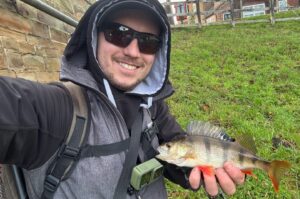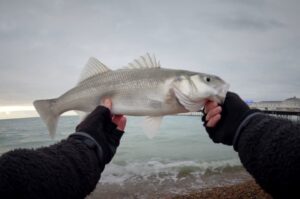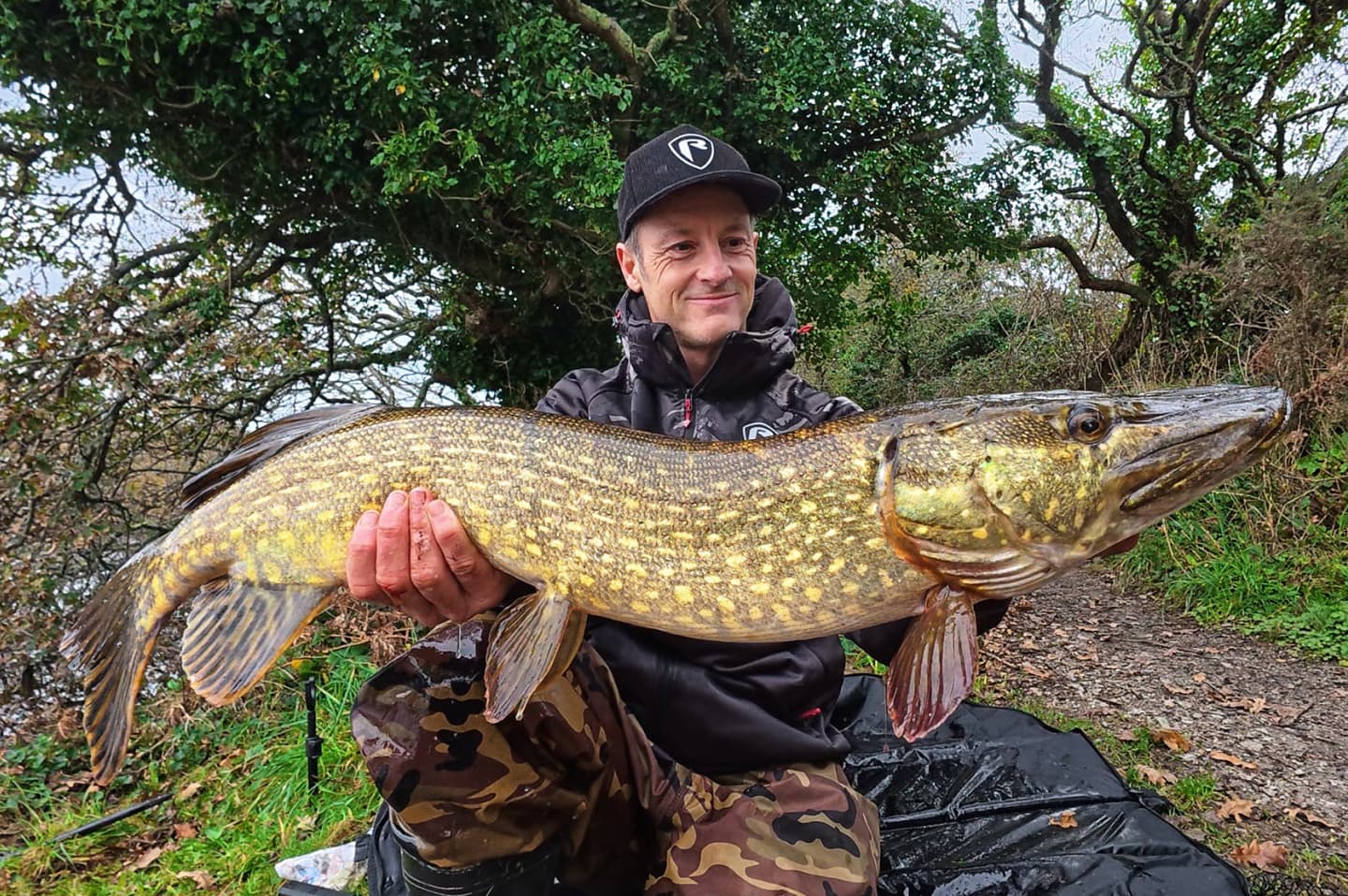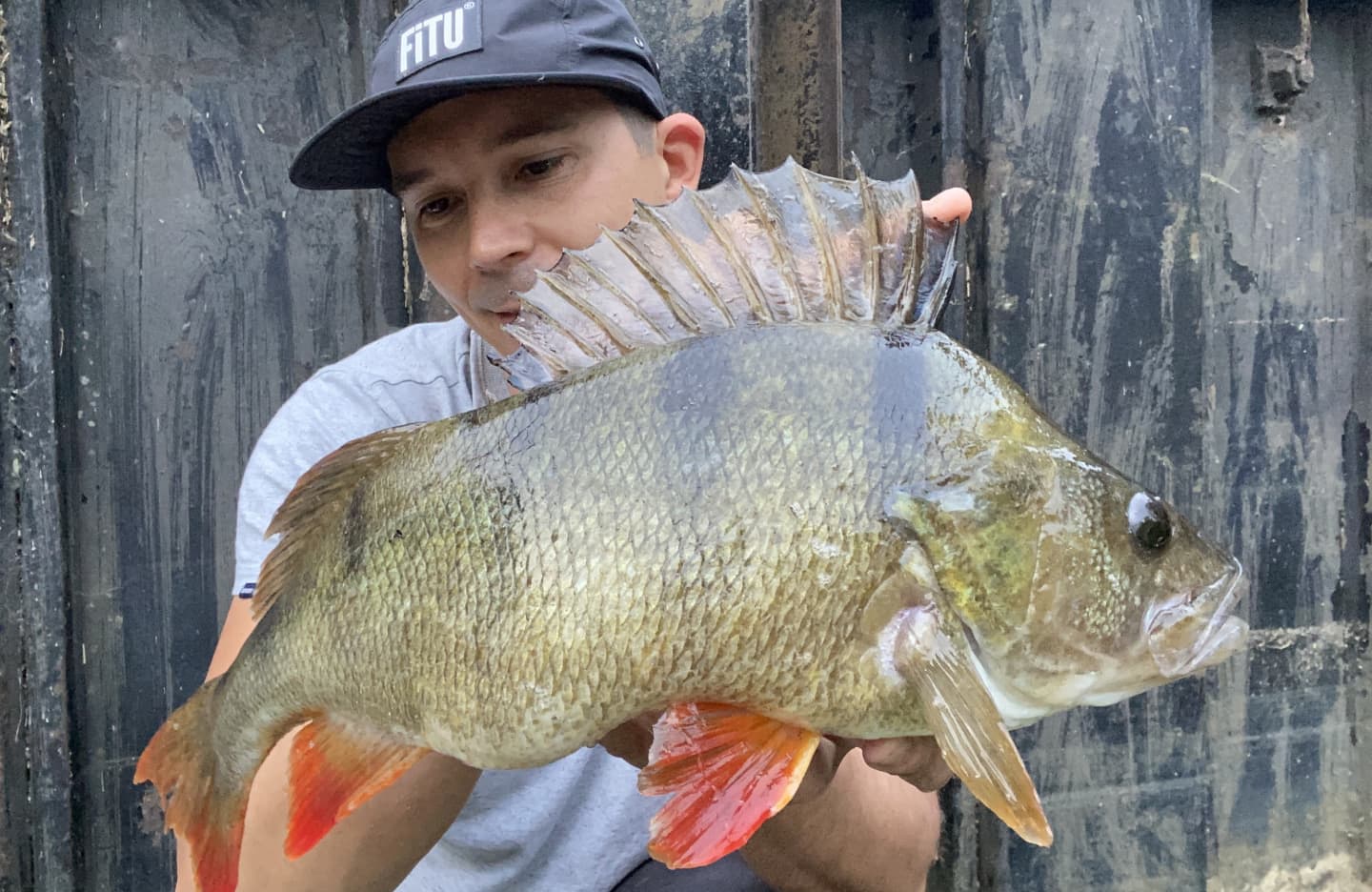
Perch Fishing 2025 – Expanded Horizons
As I sit down to write this, the first leaves of autumn are starting to drift from the trees. The scorching heat of late summer has given way to cooler mornings, and that familiar shift in the air tells me the predator season is just around the corner. For many of us – especially perch anglers – this is the time of year we long for. The weed beds begin to thin, the fish start packing on weight, and everything feels primed for serious predator fishing.
The Charm of Summer Perch
But I’ll be honest – I’ve always had a soft spot for chasing perch in the warmer months. There’s something about summer fishing that just clicks for me. I often find my best results come during sunrise, the rivers or drains come alive, and if luck’s on my side, I might even tempt a 3lb+ perch or two. This summer was no exception – in fact, I’d go as far as saying it’s been the start of my most successful perch season yet.
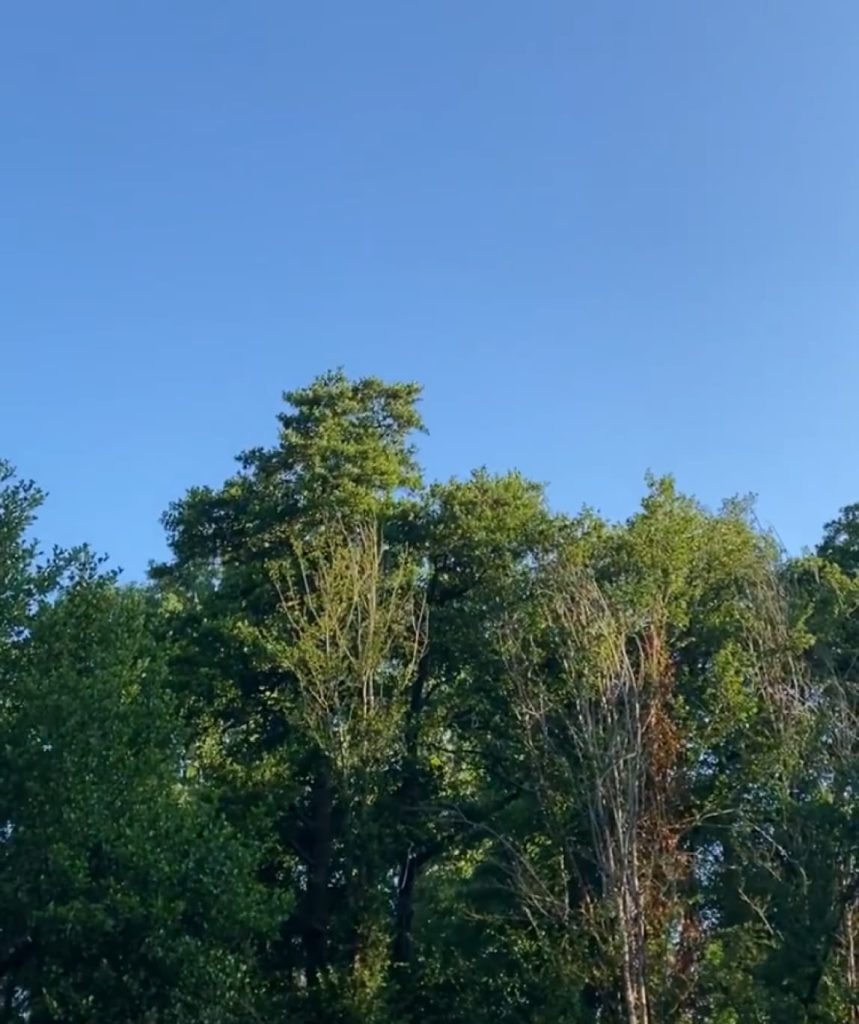
Lessons From Last Season
Like all fishing, though, it isn’t just about the destination, but the journey. Every season brings its own set of lessons, little clues and nudges that shape how we approach the next. Looking back, the biggest lesson I took from last year was the importance of broadening my horizons. I’ll admit, I’m guilty of clinging to a ‘hotspot’ until it dries up. And sure, that works for a while – but when the bites slow down, what then?
When Old Haunts Die Off
Last year taught me a valuable lesson. My usual perch haunts – the ones I could almost rely on to produce – suddenly slowed down, and by the time autumn arrived, many had died off completely. Pinpointing the exact reason is tricky, but I’d say it was a mix of pressure: the weather changing, angling pressure (my own included), and the natural shifts that come when water temperatures drop. As the rivers, drains, and canals began to carry more flow with the autumn rains, the bait fish did what bait fish always do – they moved off to find shelter and resting spots. Naturally, the perch followed.
A New Approach: Fresh Horizons
So, heading into this season, I decided to flip the script. Instead of running back to last year’s marks and squeezing them for all they were worth, I’d start fresh. The goal was simple: find new spots. Like many of us, I spent more hours than I’d care to admit scrolling over Google Maps, looking for those promising bends, bridges, marinas, and likely fish-holding features. Once I’d picked a spot, I’d give it two or three sessions. If it produced perch, I’d keep it in the rotation until the action slowed. If not, I’d chalk it up as a dead end and move on.
Building a Cycle of Hotspots
This wasn’t just about uncovering one or two golden swims – the aim was to build a cycle of spots I could rotate through as the year unfolded. The big question, of course, is whether these summer hotspots will continue to produce as the season cools. Honestly, I don’t know. It could go either way: they might all fizzle out, forcing me back to square one come autumn, or maybe – just maybe – one or two will keep delivering through the colder months. A small part of me believes the latter.
A Promising River Stretch
The first of these new venues was a local river. I count myself lucky – within a 20-minute drive I’ve got three rivers at my disposal. That kind of access makes those early mid-week sessions before work possible, giving me plenty of variety. This particular stretch I’d actually stumbled upon last winter, but at the time the river was in full flood, pushing hard with chocolate-coloured water and whole branches tumbling downstream.
I’d managed to gain access to a stretch of river that looked completely wild. Of course, being so close to town it wasn’t truly untouched, but there were no worn paths or broken branches to suggest it saw much angling pressure. What first drew me there were the features I’d spotted on Google Maps. A couple of slack-water areas stood out immediately – perfect places for fish to tuck themselves away when conditions turned rough. That alone ticked the winter box and was enough to inspire a visit. But there was also flow, and for me that’s one of the key ingredients in a good perch spot during spring and summer.
Winter Promise, Summer Potential
Back in winter, when I first stood on its banks, I could tell this wasn’t going to be an easy swim to fish. Still, I rigged up a drop-shot with a hefty 14g weight, enough to keep me tight to the structure in the slacks without constantly snagging debris on the bottom. In my head, that’s exactly where the perch would be. The problem was, a whole tree branch had lodged itself in the swim and was endlessly circling around with the current. After snagging up and breaking off a couple of rigs, I finally felt a proper bite – a thumping take that straightened my line and connected me to what felt like a solid perch.
The fight was intense, the fish refusing to come up, and all the while that tree branch kept drifting back into play. Just as I thought I was winning, the hook pulled. Gone. I was gutted, as anyone would be, but I left with something better than a fish in the net: confidence. If one was there in those conditions, there’d likely be more. I left convinced this could be a winter holding spot, one worth revisiting in 2025.

First Light Return
Flooding and poor access meant I didn’t return much over the colder months, but the place was never far from my mind. So, as soon as the new season opened, I was straight back. The question now wasn’t whether it held perch in winter – I already knew it did. The question was: would it also produce during my favourite time of year, spring and summer?
I don’t often get out of bed before 7:30am for anything… except fishing. That morning the alarm screamed at 4:00am, and by 4:30 I was already on the road, buzzing with anticipation. Early season is one of the best edges you can give yourself. The fish haven’t been hammered yet, and with few other anglers about, you often get first pickings. Beating my way through the undergrowth, I finally reached the riverbank. This was it – time to see just how good this spot could be.
The swim ticked every box: slacks, structure, and a run of faster water pushing down one side. I started in the same slack that had produced my winter bite, but aside from a nuisance pike snapping at the odd wasp, there wasn’t much happening. Moving to the structure produced the same result – except now I was seeing the place in its summer colours. Gin-clear water, fresh streamer weed, and the whole swim alive with activity.
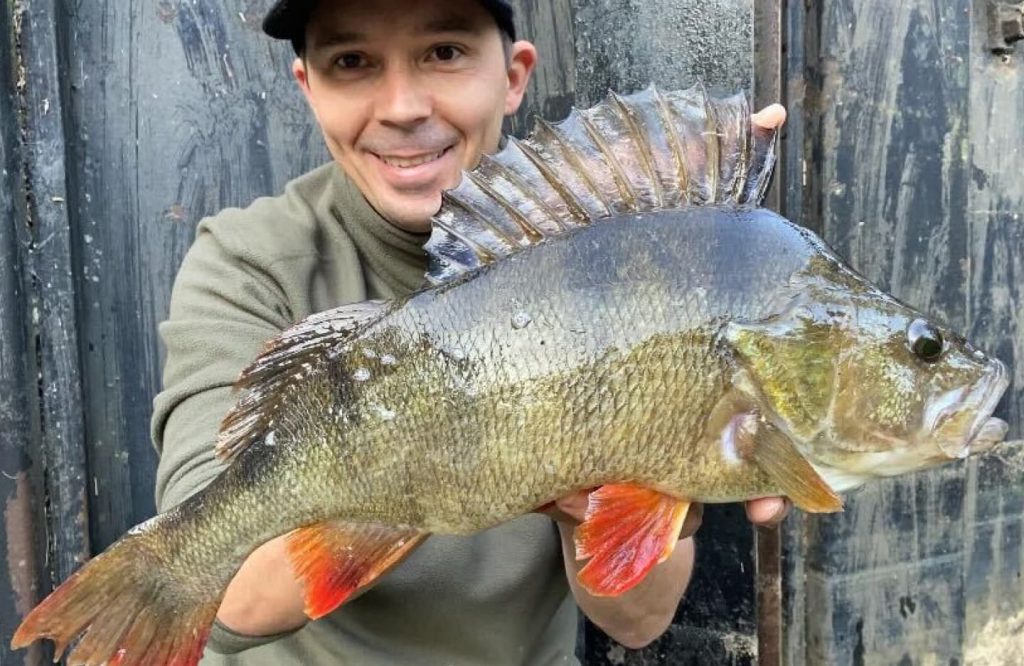
Cracking the Flow
With time running short before work, I turned my attention to the flow. I’d brought two rods – one set up for dropshotting and the other for jigging, nedding or general lure fishing. I clipped on a Stanley stickleback and began working it down the crease. Casting into the faster water, I’d allow the lure to drift naturally in the flow before engaging the bail arm. The idea was simple: with a slackish line the lure would fall naturally in the flow and the moment I felt touch-down I’d give the lure a quick lift and allow it to settle.
It worked. Within ten minutes the line pulled tight and I was into a good fish. The clear water gave me a front-row seat, and what I saw made my heart race – a whole pod of perch, all well over 2lb, following the hooked fish. Four, maybe five of them. I’d finally dropped onto the kind of honey-hole we all dream about.
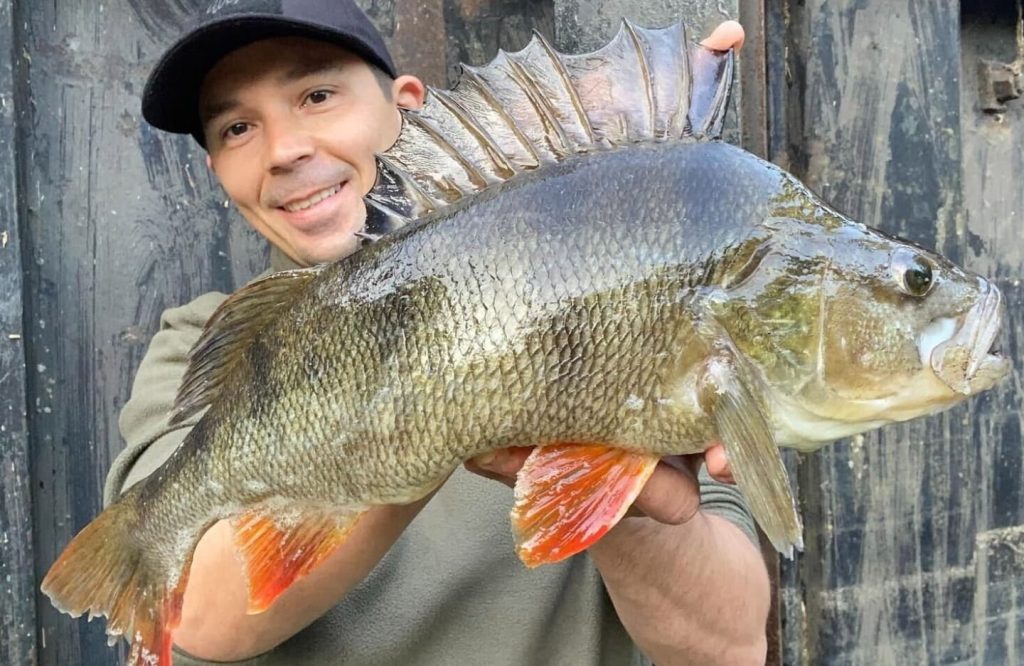
The First Three-Pounder
With the first fish safely weighed, measured, and photographed, I went straight back to work, repeating the exact same process. This time, though, the response wasn’t immediate. Nothing. The pod that had been in front of me only minutes before seemed to have vanished, and the frustration quickly set in. I knew they were there. I’d seen them.
Rather than waste time, I made the switch to my dropshot setup, downsizing the lure slightly to try and tempt another strike. I pitched the rig right into the boiling white water and let it settle. Seconds later – bang! The rod arched over, line tearing from the spool as another perch hit with full force.
The fight was epic. This fish wasn’t just powerful, it was stubborn – easily one of the hardest-fighting perch I’ve ever hooked in the UK. Eventually, after a nerve-wracking battle, I eased it into the net and instantly felt the weight. This was one of the better fish from the pod, no doubt.
After a quick unhooking and letting it rest in the net, I finally put it on the scales: bang on 3lb, measuring 42cm. The first three-pounder of the season! The earlier fish had gone 2lb 14oz at the same length – a cracking start by any measure.
A Successful Start
Eventually, time caught up with me and I had to pack up for work. I’ll admit, I toyed with the idea of staying – it’s hard to walk away when you know there are still fish to be had – but in truth, I’d already achieved exactly what I set out to do. More importantly, I’d proved to myself that this stretch wasn’t just a winter refuge. It held quality summer perch too, and that knowledge alone was enough to keep me buzzing all the way to the office.
This was the perfect start to my plan for the season: to find fresh hotspots with the potential to produce year-round. I returned a few more times and continued to catch good fish before eventually leaving it alone, happy to tick it off as a success. The real challenge now was to see if the same approach could be repeated elsewhere.
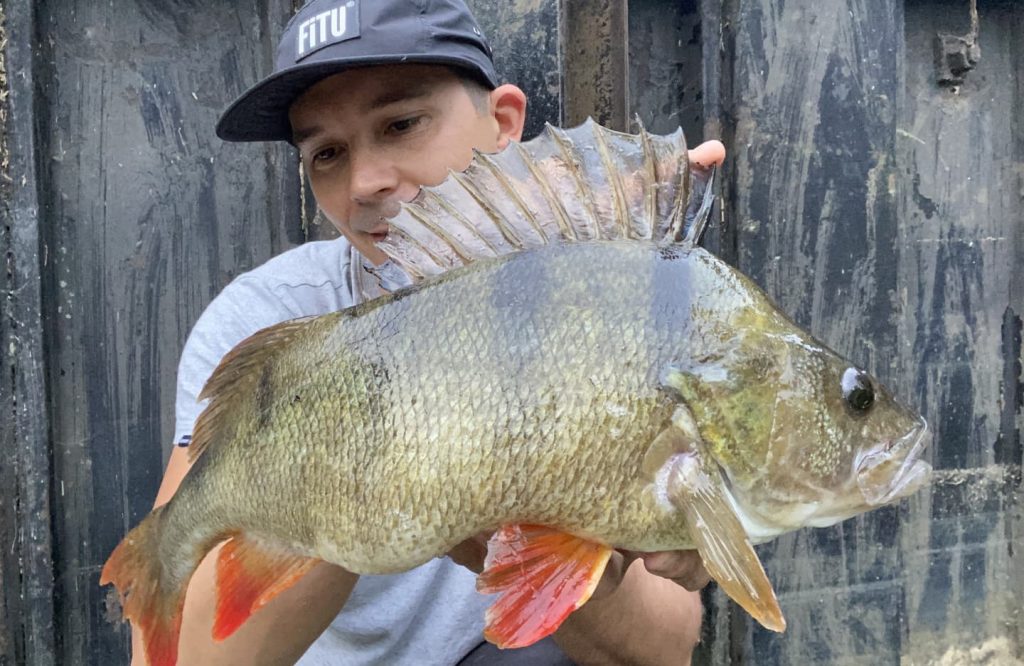
The Journey Continues
And that’s exactly what I set out to do. Through late spring and into summer, I kept up the search – some venues turned out to be blanks, others threw up surprises, but each session added another piece to the puzzle. That’s a story for another article, but one thing’s certain: the journey to find new perch hotspots is far from over.

